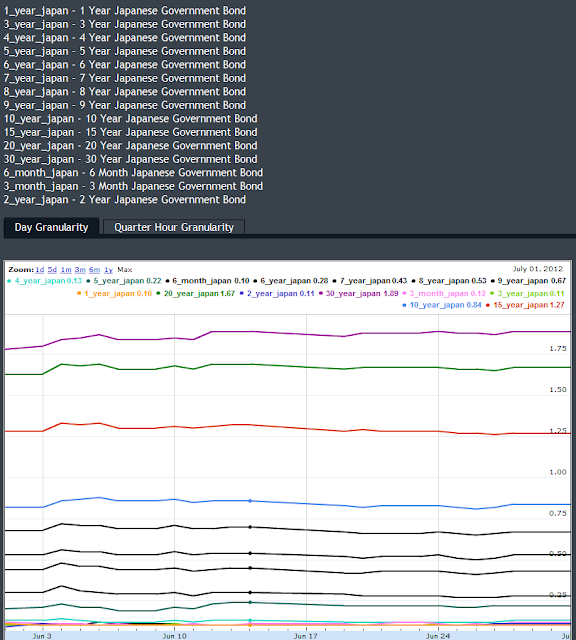On Friday there was a ubiquitous mindset of "risk-on" and in a very big way. Fueled by the announcement that the rules that govern how the ECB can recapitalize banks would be relaxed, equities and commodities around the globe surged. The biggest move in the commodities space was seen in WTI Crude which gained over 8% in one day and finished over $84/barrel. Here's the top 10 commodity gainers on Friday:
We had discussed Brent Crude back on June 21 after it had dropped through the 2012 lows. We closed that post with the following statement:
With the recent drop in oil prices, the anti-inflationist stance by the
Germans will become even harder to maintain. We would not be surprised
to hear the announcement of some type of major liquidity program out of
the ECB before the end of the month.
We wouldn't consider our wording strong enough to call the above statement a prediction, but let's just say our 'suspicion' was confirmed on the last trading day before the end-of-the-month deadline. As we had surmised, in the face of rapidly dropping commodity prices (most notably oil), Germany's anti-bailout and anti-inflationary stance would prove to be untenable. Merkel is now in the process of trying to save face after her reversal.
This is from the Business Mirror:
Chancellor Angela Merkel defended concessions she made at a European Union summit, telling German lawmakers on Friday that help to struggling countries and banks will still come with strings attached and insisting that some decisions were misunderstood.
Merkel had been opposed, at least in the near term, to some of the measures that she and the other 16 leaders of the euro countries agreed on Friday. They include allowing Europe’s bailout fund in future to give money directly to a country’s banks, without imposing strict austerity conditions on the government.
German media headlines immediately after the summit portrayed the outcome as a political defeat, but Merkel said her tough-love approach was intact.
The net effect on the Euro currency turned out to be mildly positive with the perceived stabilization of the PIIGS financial sectors outweighing the inflationary impact of the new measures. The Euro strengthened 1.6% on the day but still sits close to the lows of 2012:





































